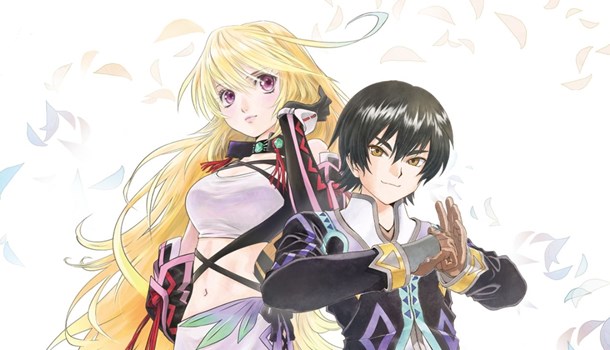
Written by Majkol Robuschi on 30 Oct 2025
Distributor Bandai Namco • Price 34.99
The fourth title in Bandai Namco’s ongoing remastering project, aimed at bringing the “Tales of” series’ past to current-generation platforms, Tales of Xillia Remastered is the high-definition version of the beloved RPG originally released in 2013 in Europe exclusively for Sony PlayStation 3. Xillia is not only the thirteenth entry in the franchise, but for Western fans it also marked the long-awaited return of the Tales of saga to home consoles after more than five years of silence from the publisher. During that period, the series’ mainline and spin-off titles for handheld systems were left unlocalized, with the sole exception of Tales of Graces F, an expanded port of the Wii chapter released only in Japan.
It once seemed as if Bandai Namco had lost faith in the potential of its flagship JRPG brand. If today we can still talk about Tales of as a high-production-value adventure in the North American and European markets, it is entirely thanks to the success of Tales of Xillia and the dedication of its producer, Hideo Baba.
In this sense, Tales of Xillia is also the first "mothership" title in the series to feature two protagonists of equal importance to its intricate narrative. Jude is a young medical student skilled in healing magic and martial arts, while Milla is the omnipotent incarnation of none other than Maxwell, Lord of Spirits, a prominent figure in the Tales of cosmology. Their paths cross while investigating the disappearance of a prominent scientist, just as the flow of mana begins to destabilize due to the reckless use of dangerous spirit-draining devices.
With two main leads to choose from, the gameplay experience and narrative scenes are filtered through the perspective of the chosen character. To uncover all the backstories behind Xillia's events and characters, players must complete the entire adventure twice, during which the pair frequently separate and reunite, gaining insights they couldn't have achieved by sticking together.
It wouldn’t be an exaggeration to say that “the thirteenth entry carried the weight of a revolution.” The game broke away from several of the franchise’s traditional design patterns, introducing environments explorable not only horizontally but also vertically, with maps featuring scalable structures, uneven terrain, and more intricate level design than ever before. The camera could now rotate freely at 360°, whereas previous entries had used a fixed perspective reminiscent of prerendered backgrounds.
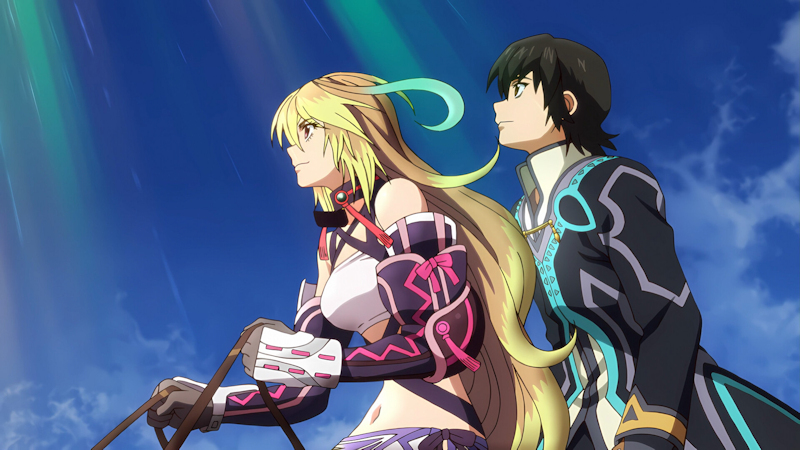
All the animated cinematics have been remastered in high definition!
Like its predecessor Tales of Graces f, Xillia also omits a traditional world map, instead relying on connective areas that segment exploration between towns and dungeons. The exploratory aspect was one of the most criticized elements at the time of its original release, due to bland environments lacking distinct points of interest. While the remaster doesn't alter this foundation, it introduces the ability to sprint for faster movement and a helpful icon-based navigation system, making exploration sessions less time-consuming. Maps still feature collection points marked by glowing orbs; gathered materials can be used in the satisfying shop development system.
Classic mechanics like the Cooking System and Crafting are replaced by a more immediate vendor growth system: the more money invested in weapons, armor, and items, or the more materials donated for research, the more shops will improve the quality and variety of their stock. Players can also donate Gald (the world's currency) to help these small commercial ventures evolve into increasingly state-of-the-art establishments.
The character growth system, meanwhile, closely resembles the Sphere Grid from Final Fantasy X. Instead of a board covered in icons, Tales of Xillia presents a series of interlaced Lilium Orbs, whose intersections form nodes. Each node represents bonuses like stat increases or brand-new combat techniques. Players can customize characters by "activating" nodes that interest them, bearing in mind that each move on the grid requires investing precious Growth Points, normally earned as a reward after battles.
This chapter also sees the return of Skits, which remain central to characterizing the protagonist cast. When the heroes have something to say about a situation, an indicator appears on screen, allowing players to view the dialogue. While permeated by a "feel-good" humor, these optional interactions provide an unparalleled level of character depth. It's highly recommended to follow them closely, as it's through these illustrated vignettes that much of the party's chemistry comes to life.
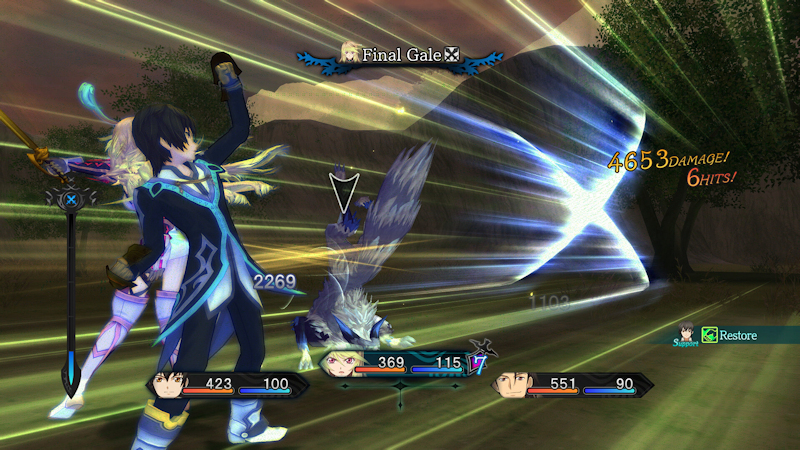
While some fans preferred Tales of Graces F's combat, Tales of Xillia's take on battle mechanics is extremely fun, and will be expanded in its sequel.
As is tradition, the expanding cast of protagonists represents one of the experience's most successful aspects. With each addition to the party, the relational dynamics are enriched by new elements and perspectives that delve into the protagonists' past and present, creating choral interactions of rare intensity. Alvin and Rowen, for instance, bring elements of shrewdness and maturity otherwise untouched by the younger heroes, while the personal stories of Leia and Elise offer reflective elements tied to their search for identity.
Yet the most compelling relationship is that between Milla and Jude, a pairing that subtly subverts gender roles within the usual JRPG framework. Jude is driven by justice yet plagued by insecurity and a fragile sense of masculinity. Milla, meanwhile, is a divine being, traditionally seen as male and elderly, inhabiting the body of a graceful young woman, at once authoritative and vulnerable.
Jude is a male hero driven by a strong sense of justice, yet equally insecure and unable to assert himself in society due to a masculinity portrayed as nascent because of his youth. Milla, conversely, is a deity—typically depicted as a male, elderly figure—who finds herself inhabiting the body of a graceful and unconsciously attractive young woman.
Their relationship begins as one between two figures unable to connect due to unrealized romantic tension and constant misunderstandings that seem to hurt them or breed mutual disinterest. It is only through their maturation, Jude's growing self-awareness, and Milla's slow but unstoppable process of humanization that their dimensions finally align, allowing for a dialogue based on mutual respect and deep admiration. While not a traditional adolescent romance, one could easily argue that the bond between Jude and Milla represents one of the most subtle and delicate portrayals of mature affection ever staged in a JRPG.
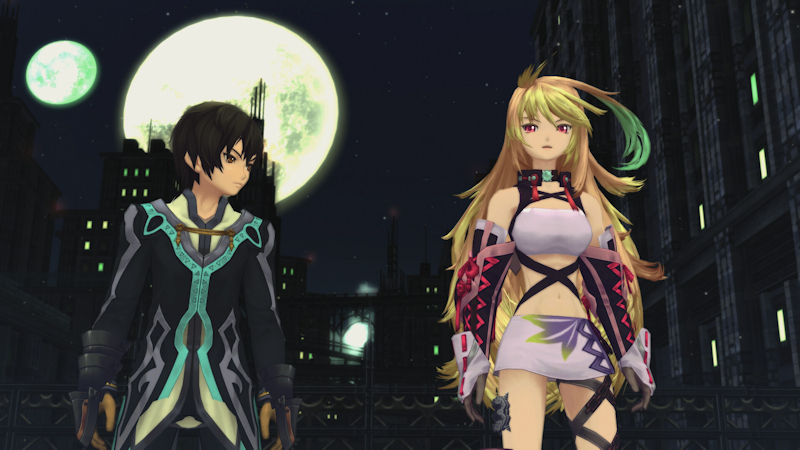
Jude and Milla's relationship is deeply nuanced
Returning to series tradition, Xillia also boasts a thrilling battle system from the very first encounter.
Upon contacting an enemy in the field, players are transported to a circular arena. They can choose between total freedom of movement via the Free Run system or rely on the more traditional Linear Motion Battle System (LMBS). The latter allows players to move along an imaginary horizontal axis linking them to a targeted enemy once locked on. Attacks and special techniques, called Artes, can be dynamically chained together. Every action, however, depletes the Assault Counter (AC) gauge, which refills only by waiting or successfully executing evasive moves that test the player's reflexes and timing.
Each character has a completely different combat approach. Although the story is experienced only through Milla's or Jude's eyes, players can control any party member in battle, devising strategies and using increasingly devastating techniques to their liking, while leaving AI-controlled allies to a customizable tactics system.
To this already compelling formula, a defining feature was added, renaming it the Dual Raid Linear Motion Battle System: the bonds between party members don't just affect group dynamics but also influence their behavior in combat. By linking two characters during battles, players can access devastating, highly cinematic Linked Artes. Of course, partner choice must consider factors aligned with their personalities and aptitudes: Jude, the male protagonist and medical student, tends to constantly heal his linked partner, while Alvin, the silver-tongued mercenary, leverages his massive weapon to easily break enemy guards, helping the player chain attacks.
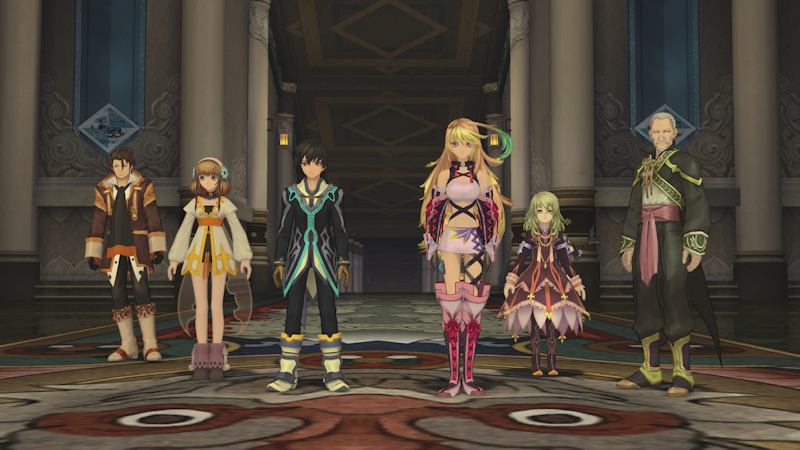
When Tales of Xillia was released many fans speculated that two more characters should have joined Milla's and Jude's party. Can you guess who?
Party composition can be changed on the fly, encouraging real-time strategy adjustments and dynamic tactical play. Battles can become fast and intense, especially at higher difficulties, but a thoughtful approach always pays off.
Although Tales of Xillia represented the series' first major leap into developing HD console JRPGs, the narrative backdrop for the heroes' adventure reiterates many of the franchise's central themes and elements.
Situations explored in previous series entries, such as the coexistence of different species, political intrigue, and a material world interdependent with the spiritual realm, will sound familiar to fans. It seems that for every novelty introduced in content and technical design, like the dual-hero concept, the exploration model, or the new character growth system, Tales of Xillia balances the scales with returning traditional elements, alongside situations, clichés, and archetypes that keep the experience within the brand's comfort zone. Where Xillia unquestionably improved over prior chapters was in the direction of its main cinematics, elevating the storytelling to the level of an animated series. This cinematic flair lends the story’s later chapters a heightened dramatic tone, blurring the line between JRPG and animated series: one more reason to stay immersed in the tangled fate of Rieze Maxia and its people.
Aesthetically, Tales of Xillia is the first Tales title to completely abandon the series' classic super-deformed proportions. The character design is the fruit of a collaboration between Kosuke Fujishima and the late Mutsumi Inomata. Consequently, the main cast blends shojo influences with suggestions closer to classic battle shonen.
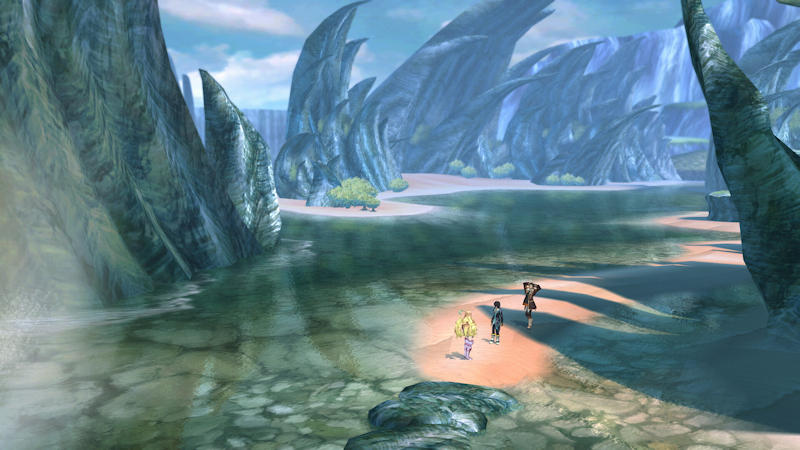
Some of the most memorable environments are direct 3D translations of marvelous concept arts, which can be discovered in the deluxe edition of the game.
Unfortunately, the same level of praise cannot be extended to the technical aspects, which were dated even at the original time of release, though held together by an art direction that downplays its polygonal simplicity. A greater differentiation in the character models for secondary NPCs and more varied port town areas (which became a meme among fans at the time) would have been desirable, though these flaws are consistent with Japanese JRPG production of that era. The remaster successfully delivers a smooth framerate during exploration and combat but does not alter the original desaturated color palette that led many to characterize Tales of Xillia as one of the less visually attractive entries.
The soundtrack by the perennial Motoi Sakuraba is serviceable, with rare creative flourishes coinciding with a handful of tracks backing certain cinematics and the two main battle themes. The English voice acting is of variable quality, but this remastered version finally allows players to experience the entire game with the original Japanese voice cast, among which Miyuki Sawashiro's transformative performance as Milla is a standout. In this regard, subtitles—now more legible thanks to a clearer font—are also extended to battles and victory scenes.
Worthy of special mention is the inclusion of the opening sequence animated by Ufotable, still accompanied by the voice of the famous J-pop singer Ayumi Hamasaki; "Progress," the song chosen as the theme for Jude and Milla's adventure, remains one of the most beautiful and recognizable pieces selected for a JRPG of that era.
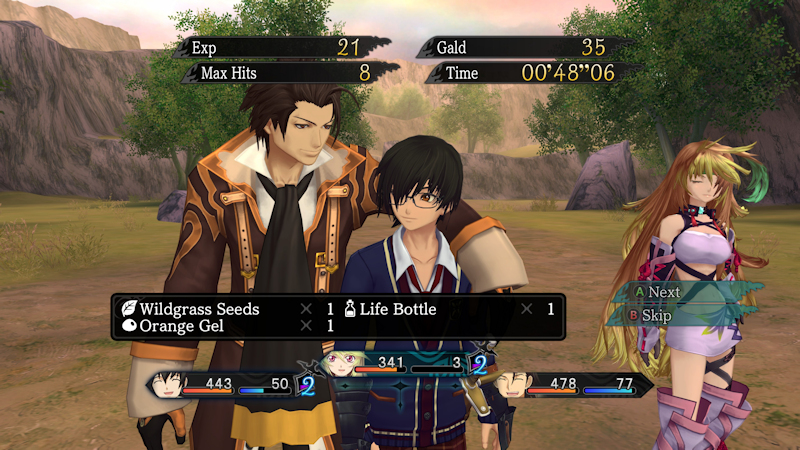
All the dialogues are finally subbed as expected, even during battle and post-battle skits.
In conclusion, it's useful to note that, as with the recent release of Tales of Graces f Remastered, Tales of Xillia Remastered includes access to the Grade Shop from the beginning of the adventure. This allows players to modify the game's balance, speeding up character progression or altering protagonist abilities, perhaps to start the game on the highest challenge level, originally unlockable only after a first playthrough. This is joined by various quality-of-life additions, such as auto-saving during exploration, the option to disable enemy encounters on the field, and the ability to calibrate the camera distance during both exploration and battles. The game remains, as always, playable in local co-op multiplayer, which is excellent news. It remains a shame that the sequel, Tales of Xillia 2, was not included in the package, differently from costume DLCs: just don't expect to find the licensed ones.
Ultimately, Tales of Xillia Remastered is more than a simple restoration: it’s a heartfelt recollection of what made Bandai Namco’s JRPG saga so beloved over the past thirty years. Though it inevitably shows its age in structure and technology, its emotional storytelling and rich character writing remain intact. The remaster enhances accessibility and smoothness without tampering with the soul of the original, offering a nostalgic yet rewarding return to a time when sincerity and character-driven drama meant more than spectacle.

Majkol (aka Zaru) is an Italian queer writer (he/him – they/them) who has been immersed in the world of video game journalism for almost two decades. With a deep-seated love for anime and manga shaping his tastes and passion, he brings a blend of critical insight and heartfelt enthusiasm to his work, celebrating stories that challenge norms and embrace diversity. Find him on his blog, Also sprach zaru_thustra.
posted by Ross Locksley on 13 Nov 2025
posted by Ross Locksley on 07 Nov 2025
posted by Ross Locksley on 06 Nov 2025
posted by Ross Locksley on 30 Oct 2025
posted by Eoghan O'Connell on 30 Oct 2025
posted by Ross Locksley on 28 Oct 2025
posted by Ross Locksley on 28 Oct 2025
posted by Ross Locksley on 23 Oct 2025